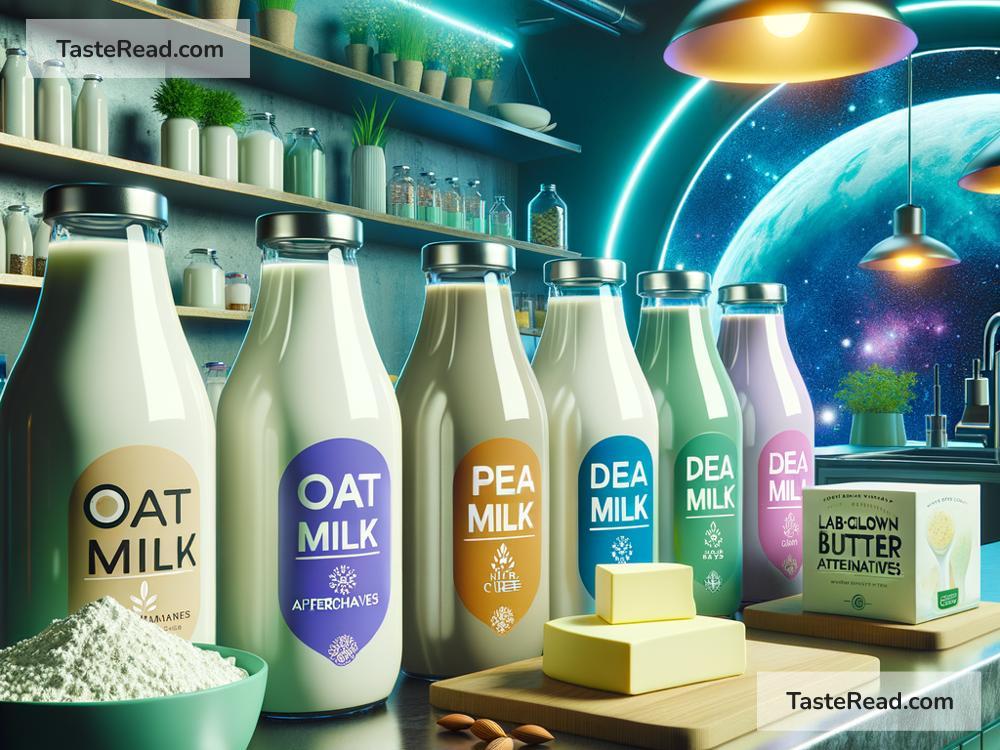The Future of Dairy Alternatives: A Growing Trend
In recent years, dairy alternatives have become more popular than ever before. From almond milk to oat milk, these substitutes are popping up everywhere — in grocery stores, coffee shops, and even in schools. But what does the future hold for dairy alternatives? Why are so many people switching from traditional cow’s milk to plant-based options? Let’s dive into this exciting trend and explore what’s next for the world of dairy-free living.
Why Are Dairy Alternatives So Popular?
One major reason people are turning to plant-based dairy alternatives is health. Traditional cow’s milk is full of nutrients, but it also contains lactose — a type of sugar that many people can’t digest properly. This condition, known as lactose intolerance, affects about 68% of the world’s population. For those people, plant-based milk is an easier and more comfortable option.
Some people choose dairy alternatives for ethical reasons. Producing cow’s milk often raises concerns about animal welfare and environmental sustainability. Many consumers feel uneasy about how cows are treated on large dairy farms and how much land and water the dairy industry uses. Plant-based options, like almond or oat milk, require fewer resources and cause less harm to animals, making them a more appealing choice for environmentally conscious shoppers.
Finally, some people simply enjoy the variety of flavors and textures that dairy alternatives offer. While cow’s milk generally tastes the same, plant-based milks can surprise your taste buds. Coconut milk, for example, is sweet and creamy, while cashew milk has a rich and nutty flavor. These exciting options make it easy for people to find a milk that fits their preferences.
Types of Dairy Alternatives
The dairy-free market is already packed with options, and new products are constantly entering the scene. Here are a few of the most popular types of dairy alternatives:
-
Almond Milk: Made by blending almonds and water, this nutty drink is low in calories and has a light texture. It’s a favorite in coffee shops and smoothies.
-
Soy Milk: One of the oldest dairy alternatives, soy milk is high in protein and widely available. Its neutral taste makes it a versatile choice for cooking and baking.
-
Oat Milk: Creamy and slightly sweet, oat milk is quickly becoming a favorite. It’s great for lattes and cereal, and it’s perfect for people with nut allergies.
-
Coconut Milk: Thick and rich, coconut milk works well in desserts, curries, or even as a dairy-free whipped cream. It’s commonly used in tropical cuisines.
-
Cashew Milk: Smooth and subtly nutty, cashew milk is ideal for creamy soups, sauces, or even ice cream.
-
Pea Milk: Made from yellow split peas, pea milk is full of protein and has a smooth, neutral taste. It’s a newer option that’s gaining attention.
There are also fun blends, such as almond-coconut milk or oat-barley milk, which mix different ingredients for unique flavors. On top of that, the dairy alternative market has expanded beyond milk to include plant-based yogurt, cheese, butter, and even cream. These products make it easier than ever to go completely dairy-free.
The Growing Market for Dairy Alternatives
The market for plant-based dairy is booming. According to research, the global dairy alternatives market was worth around $24 billion in 2022 and is expected to grow significantly over the next decade. This rapid growth is driven by changing consumer preferences. Younger generations, especially Millennials and Gen Z, are showing greater interest in vegan and vegetarian diets. Their choices are shaping the food industry and encouraging more companies to create dairy-free products.
The rise of allergies and food sensitivities also helps fuel demand for alternatives. More parents are buying dairy-free options for their children, even if they don’t have allergies, as a way to introduce healthier or varied diets at an early age.
Technology Will Shape the Future
The future of dairy alternatives looks bright, not only because of consumer demand but also because of technological advancements. Scientists and food innovators are working hard to create products that taste and perform just like traditional dairy. For example, some companies use fermentation technology to make plant-based cheese that melts perfectly or yogurt that has the same tangy flavor as its dairy counterpart.
Another exciting innovation is lab-grown milk. Researchers are experimenting with precision fermentation, a process that uses microorganisms to produce real dairy proteins without cows. This could be a game-changer for people who love the taste of cow’s milk but want a more sustainable option.
Challenges Ahead
Despite their popularity, dairy alternatives aren’t perfect. Some options, such as almond milk, require a lot of water to produce, leading to environmental concerns. Additionally, plant-based products can sometimes be more expensive than regular milk, making them less accessible to certain consumers.
Taste and texture also remain challenges. While plant-based milks are improving, some people still prefer the richness of cow’s milk for certain recipes, such as baking or making creamy sauces.
Conclusion: A Dairy-Free Future
Dairy alternatives are no longer just a niche product — they’re mainstream. With growing awareness of health, environmental, and ethical issues, more people are saying goodbye to cow’s milk and hello to plant-based options. As technology improves and the market expands, dairy alternatives are likely to become even more delicious, affordable, and accessible.
Whether you’re lactose intolerant, vegan, or simply curious, now is a great time to explore the world of dairy alternatives. The future of dairy-free living is here, and it’s full of exciting possibilities!


